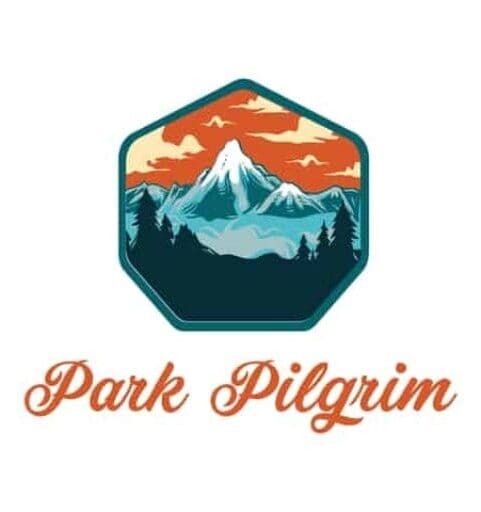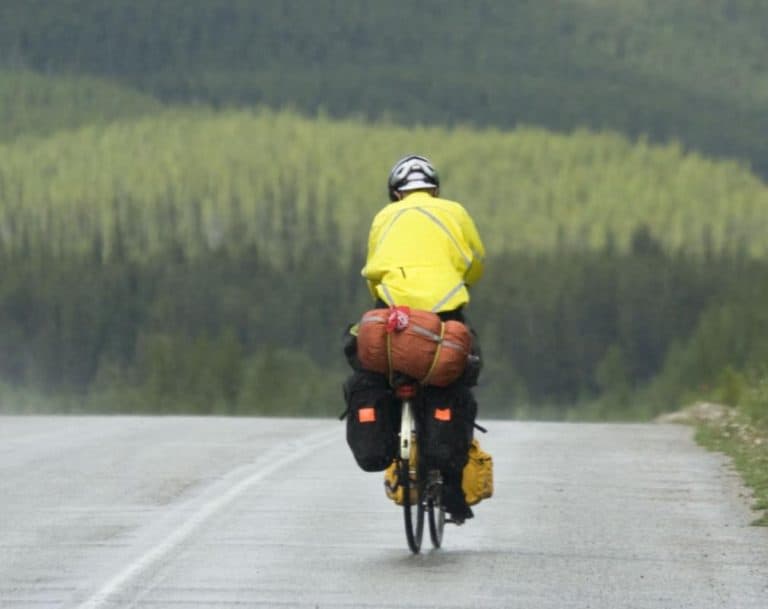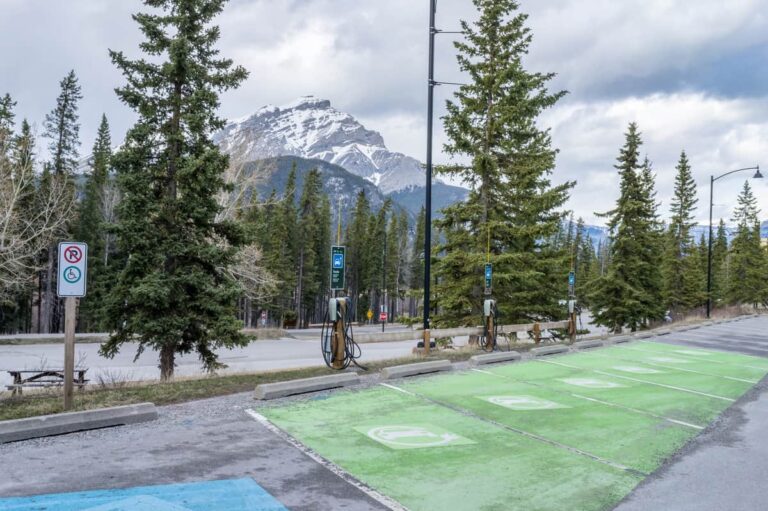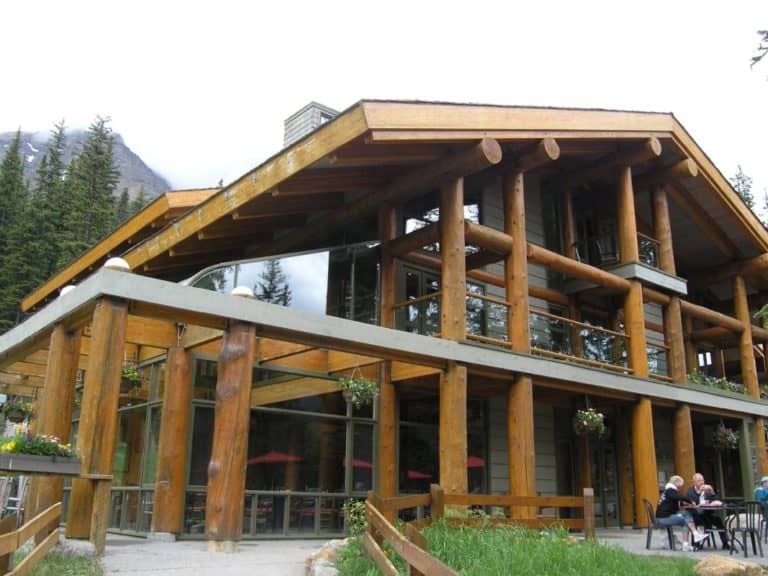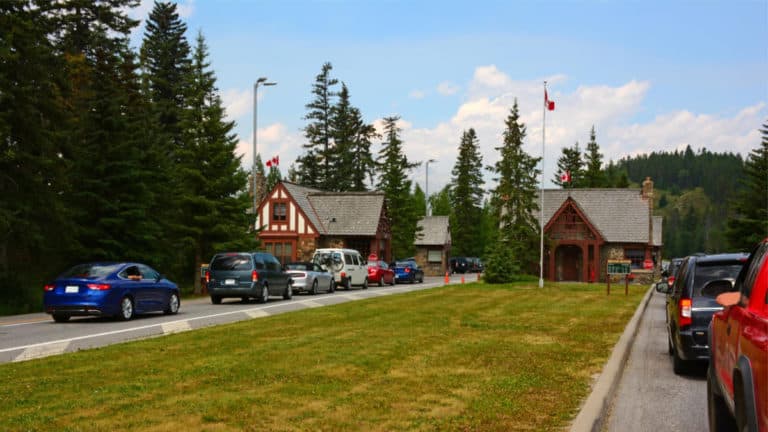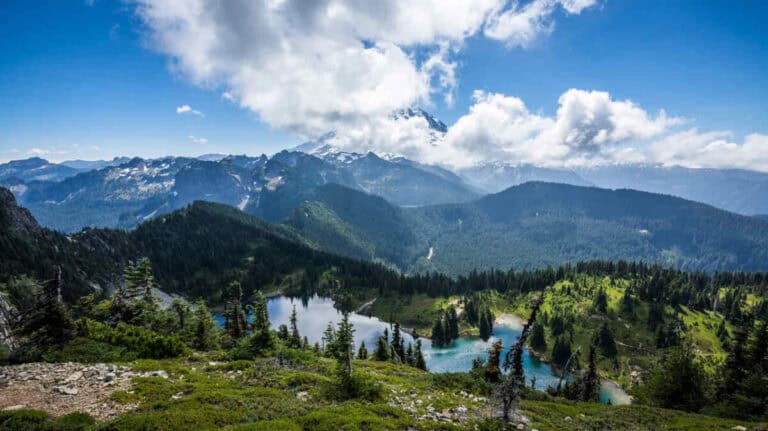Johnston Canyon in Winter – All You Need to Know

Johnston Canyon is a beauty all year round, but it caters to a whole different experience during the winter months. What could possibly lure visitors to the Johnston Canyon in winter, and how can you make the most out of this trip? Let’s dive in and find out!
Why Visit Johnston Canyon in Winter?
The main reason why people go to Johnston Canyon in the winter is to enjoy the ice walk that runs along steel catwalks and snow-covered forest paths. This might sound like a challenging feat, but the trail is actually considered easy to moderate.
Although the snow can make the trail seem daunting, the winter hike still has its appeal. After all, the iconic waterfalls will be frozen, but you’ll still be able to see (and hear!) the gurgling water under the icy shell.
What’s There to See on the Johnston Canyon Winter Hike?
All in all, there are a handful of waterfalls in the Johnston Canyon area. Two of them were even named after Walter Camp’s wife and daughter: Marguerite and Stella.
However, two other waterfalls, in particular, are quite popular among winter hikers, along with natural pools of mineral water at the end of the scenic trail.
So, let’s take a closer look:
| Lower Falls | Upper Falls | Ink Pots | |
|---|---|---|---|
| Trail Length | 1.2 km (0.7 miles) | 2.5 km (1.5 miles) | 5.7 km (3.54 miles) |
| Elevation | 50-meter gain | 120-meter gain | 330-meter gain / 140-meter loss |
| Main Attraction | Waterfalls | Waterfalls and watching ice climbers | Water springs |
Lower Falls
The first (and easiest) stop along the hike is the Lower Falls, with a simple elevation gain.
There, you’ll be able to see frozen icicles all along the 30-feet waterfall drop. You might also spot some of Banff’s unfrozen turquoise waters. Generally, it’s the perfect place for snapping some pictures.
If you’re setting from the Johnston Canyon day-use area trailhead, it should take you under a mile of hiking to get to the Lower Falls.
So, if you decide to cut the trip short and head back, the whole round trip will take around an hour. However, I’d highly recommend that you push forwards to the next stop.
Upper Falls
Following the steeper part of the trail, you’ll come across the Upper Falls, with a whopping 100-feet drop. There you might even spot some adventurous climbers making their way up the frozen wall!
While the Upper Falls drop is, hands down, the most breathtaking of all the waterfalls in Johnston Canyon, it’s not really a place for photography. Instead, you might just want to stand back and take in the view.
Your first viewpoint should give you a wide sight from the bottom up. That said, we’d also recommend walking the extra distance for the second viewpoint on top through the steeper trail.
Just keep in mind that the trail between the Lower and Upper Falls might be closed for construction work, depending on when you visit. So, it’s always better to check the park’s bulletins first before planning the hike.
By now, if you decide you’ve had enough adventure for the day, the round trip should wrap up to around two hours, plus whatever time you spend sight-viewing along the trail.
Ink Pots
If you’re up for a challenge, you can opt to keep going on the trail till you get to the Ink Pots for a four-hour round trip.
The Ink Pots are mineral springs known for their vibrant blue and green shades. However, during the winter hike, you can expect to see the majority of the landscape covered in snow.
Of course, you can’t swim in the frozen Ink Pots, but that’s not something you’d be allowed to do during the summer, either.
Seeking an extra boost of adventure, some people like to go off-trail in search of the secret cave. What many visitors call the “secret cave” actually happens to be a large overhang, and it’s gotten quite popular recently.
Unfortunately, this off-track hike is sometimes closed to public access in an effort to protect the nesting black swift population. If you’re into birdwatching, you’ll know that it’s a rare sighting, but it’s still not worth endangering wildlife (and paying a hefty fine!) by breaking into restricted areas.
5 Things to Keep in Mind Before a Winter Johnston Canyon Hike
To make the most out of your winter hike, you’ll need to plan for every minor detail, from what you’ll wear to how long you spend in the canyon.
Here are some aspects to keep in mind:
Gearing Up
The winter temperature in Johnston Canyon can drop to 0°C (-32°F) easily. So, ideally, you’ll want to dress in layers for the ice walk with as much coverage as possible; parkas, heavy socks, scarves, mittens, and ear covers are all recommended.
Plus, it could also be a good idea to get a pair of cleats or even snowshoes to get better traction on slippery surfaces.
If you’re going as a part of a guided tour, you can always ask if the cleats and hiking poles are included in the package. Otherwise, you might have to rent one from your resort or buy one before the hike.
Packing the Essentials
Although the hike isn’t particularly strenuous, it’s better to pack water and a few snacks.
Some guided tour packages include hot chocolate and a maple cookie snack, but not all of them will do. So, it’s better to have something on hand than spend the hike low on energy.
Aside from that, you just need a camera and a map. Since you might not be able to pick up a phone signal on the trail, make sure to grab a map from the Banff Visitor Center.
Banff Visitor Center
Address: 224 Banff Avenue, Banff
Phone: +1 403 – 762 8421
Website: banfflakelouise.com
E-mail: info@banfflakelouise.com
Getting There
To actually start the hike, you need to access the trailhead in the Johnston Canyon day-use area.
Thankfully, you can use Roam’s weekend transport service offered in the Banff National Park to get there. The bus you’re looking for here is Route 9, which takes Banff Parkway Highway 1A.
Just keep in mind that the fall and winter schedules are different from the regular summer ones, and they start a bit earlier. Either way, you need to be ready for pickup from the Banff High School Transit Hub on Banff Avenue, across the Elk + Avenue Hotel.
Alternatively, you can drive there if you have your own car or pick up a rental for the trip.

Going Solo vs. Guided Tours
Most people choose group tours since an experienced guide can offer some historical and geographical insights. Additionally, being picked up from your lodging right to the trailhead means that you won’t have to worry about driving or finding a parking spot once you get there.
Some people might even opt for private tours to cut the hassle of waiting for larger groups to gather, but these can be pretty pricey.
However, it’s still possible to take the hike on your own. After all, the trails are pretty well-marked, and you won’t have a hard time finding your way.
Going solo could be a good option if you’re looking to explore the area at your own pace or even save a couple of bucks. You don’t have to pay any extra fees to access the Johnston Canyon area; it’s included in your Banff National Park entry fee or the Parks Canada Discovery Pass.
Estimating the Duration
You can set anywhere from one to four hours for the hike itself and an extra hour or two for leisure, depending on how far you decide to go.
All in all, it’s more of a half-day activity unless you push forward to the Ink Pots. In that case, it could be more of a full-day activity, and you might want to consider your lodging options.
Where to Stay During Your Visit
Depending on where you live, it’s possible to keep the Johnston Canyon trip limited to a single day.
However, if you’re planning to extend your stay, you can look into the closest accommodations to the canyon:
Spending the Night at a Campground
It would be wildly convenient to stay in one of the 132 sites in the Johnston Canyon campground to stay as close as possible to the trailhead. Unfortunately, it’s sometimes closed for the season by September.
If that’s the case, you’ll need to go a bit far from Johnston Canyon to find a campground that’s open for the winter in the wider Banff and Lake Louise area.
Your best bets are the Lake Louise Hard-sided and the Tunnel Mountain Village II grounds since they’re both available all year round. However, they’re both around a 30-minute drive from the canyon, and you’ll be better off booking a spot in advance.
Staying in the Johnston Canyon Lodge & Bungalows
The Johnston Canyon Lodge & Bungalows hotel is sometimes referred to as the Johnston Canyon Cabins, Resort, or simply the Lodge.
It’s a good fit if the camping lifestyle doesn’t really float your boat, and you need to lodge as close to the Johnston Canyon area as possible.
There, you’ll get to choose between a few possible accommodation options, depending on your budget and group size:
- Bungalow (different sizes and styles for up to six people)
- Two-person studio (with or without a fireplace)
- Two-person cottage (or a family upgrade to accommodate four people)
- Two-person red cabin
- Two-person carriage house
Asides from the accommodation itself, you’ll also have access to the Market Cafe and the Black Swift bistro for meals and drinks. If you don’t mind the cold air, you can dine on the outdoor patio by the creek, too.
There’s also dedicated parking for the bungalow lodgers. So, it’s all around a convenient option with hints of luxury, but definitely more expensive than camping.
Johnston Canyon Lodge & Bungalows
Address: 1A Bow Valley Parkway, Banff
Phone: +1 888 – 378 1720
Website: johnstoncanyon.com
E-mail: info@johnstoncanyon.com
Castle Mountain Chalets
A 10-minute drive away from Johnston Canyon towards Lake Louise leads you to the Castle Mountain Chalets. There, you’ll get to choose between deluxe bedrooms, suites, chalets, and spacious lodges for larger groups.
The Castle Mountain also offers rentals on snowshoes, so you can get one if your tour doesn’t cover cleats. Plus, you can even set up a fire pit when you return from the Johnston Canyon ice walk to warm up!
Castle Mountain Chalets
Address: Jct Hwy 93 South and Banff 1A, Banff
Phone: +1 403 – 762 3868
Website: castlemountain.com
E-mail: info@castlemountain.com
Lodging in Banff and Lake Louise
If you don’t mind going a bit further, you can find a wider range of accommodations in the main Banff and Lake Louise areas.
For instance, you can opt for something like the Fairmont Château Lake Louise or the Fairmont Banff Springs, both 30-40 minutes from the canyon.
Fairmont Banff Springs Hotel
Address: 405 Spray Avenue, Banff
Phone: +1 403 – 762 2211
Website: banff-springs-hotel.com
E-mail: banffsprings@fairmont.com
Fairmont Château Lake Louise Hotel
Address: 111 Lake Louise Drive, Lake Louise
Phone: +1 403 – 522 3511
Website: chateau-lake-louise.com
E-mail: chateaulakelouise@fairmont.com
Can You Ski or Ride Bikes on the Johnston Canyon Hike?
No, you’ll have to stick to walking on the Johnston Canyon trail. If you’re looking for winter walks in Banff that accommodate bikes, skating, skiing, and even horseback rides, you might want to consider the Spray River area instead.
The Fenland fat-bike trail is also a good alternative, with no elevation gain over a 2.1-km (1.3-mile) loop.
Is the Johnston Canyon Area Safe During the Winter?
As long as you prepare for the cold temperature, avoid slippery grounds, and steer clear of the restricted off-trail areas, the hike should be fairly safe. Yet, some people might worry about bear attacks.
While there are both grizzly and black bears in the Banff National Park, you’re not likely to come across any of them on the trail in winter as bears are hibernating.
However, the occasional bear is spotted in winter, so always make sure you take bear spray with you and hope you won’t need to use it.
Alternatively, you can always just opt for a guided tour if you’re not comfortable taking the hike alone in the winter.
